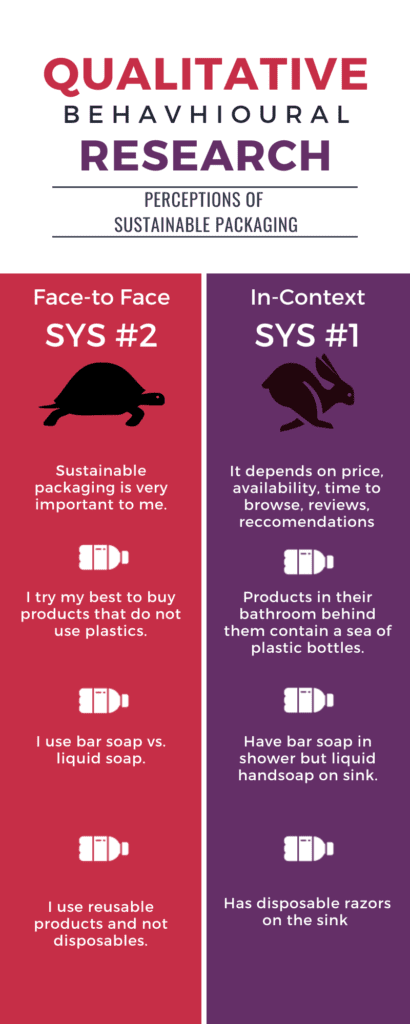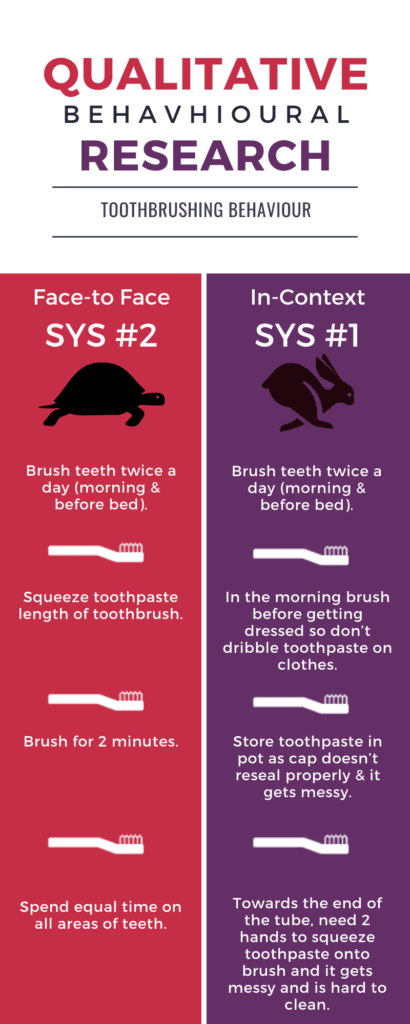Qualitative behavioural research: key principles
Qualitative behavioural research allows us to understand the what’s, the how’s, and the why’s of peoples’ decision making and the consequent actions taken.
As market/shopper/consumer researchers, we want to learn and gain an empathetic understanding of:
- what consumers do,
- how they do it, or
- how they make a decision, and
- why they do it in that way
This can hold enormous advantages when it comes to shaping ways of meeting a consumer’s needs in the future, by uncovering:
- better ways to communicate with them,
- better ways for products to stand out on-shelf,
- better ways to solve their problems, and
- better ways to improve their daily lives.
The best way to approach behavioural research
Before going into research design and principles, the most important thing for a behavioural researcher to consider is how to capture true consumer behaviour.
The best behavioural research goes beyond listening. Goes beyond what the consumers say they do. It takes a critical look at what they actually do. To properly and more holistically understand all the factors influencing that behaviour.
It all starts with an understanding of Daniel’s Kahneman’s groundbreaking principals in thinking processes.
Kahneman’s research showed that the brain has two operating systems:
- System 1 – the automated, fast, subconscious system.
- System 2 – the more calculated, slow conscious system.

Although we know that the large majority of behaviour and decision processes are carried out by the automatic system 1, both systems have an important role in consumer behaviours and consumer decision making.
Therefore, when you want to understand consumer behaviour it’s important that you allow a person to use their natural processes to show you how they shop, how they interact with a product or what their true opinion is on a topic.
Unfortunately many traditional qual techniques impede the system 1 processes and unnaturally push those behaviours into system 2.
This can often result in misleading insights based on inaccurate consumer recollection of their own behaviours.
Design research to capture true behaviours
Every project will be different, therefore the best research approach will vary, but the core principals will always be the same:
- Observe
The consumer in the most natural way possible:- The natural environment for the occasion.
- At the time the occasion would naturally occur.
- With the people the occasion would naturally occur.
- Don’t force an occasion in an interview room where the consumer responses are completely out of context.
- Remove the pressure
…of wanting to please someone:- Where possible remove or limit any audience – they may give subconscious clues which influence the consumer’s responses or actions.
- Don’t just listen
Most importantly, don’t just listen to what people are telling you. Classically they say a picture is worth a thousand words. So look as well.- What is their body language or facial expressions telling you?
- What are they actually doing but not articulating?
- What is their natural environment – the things around them -telling you about their behaviour?
What do you get from true behavioural research?
Simple, you get more!
You get more than just a voiced recollection or a reenactment of an event.
You get to see the reality!
You see where the event happens, what factors in the natural environment influence the event, the processes and behaviours leading up to and following the event.
You get to see the truth beyond what is being said and you gain an understanding of the contradictions and challenges which play a role in the underlying behaviour.
This gives you more than just an insight. It gives you a holistic consumer insight which can drive opportunities for impactful improvements. Better ways to communicate, better ways to stand out on shelf, better ways to solve an unknown consumer frustrations and it helps you achieve the ultimate goal of getting your products and services to become an integral part of consumers daily lives.
Don’t just take our word for it, think about it yourself in the examples below. How would you answer such questions in a Face-2-Face interview vs how would that compare if we watched you in your own home?



Comments
Comments are disabled for this post